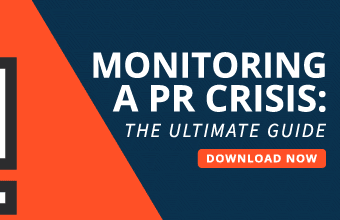More than three-quarters of communication executives (81 percent) said the communication function has been “important” or “very important” to their company’s COVID-19 response, according to new research from the Institute for Public Relations and Peppercomm.
In the new study, COVID-19: How Businesses Are Handling the Crisis, 300 communication executives and senior leaders were surveyed to find out how their companies were faring in the COVID-19 pandemic, including what sources they trusted, how prepared they were for the crisis, and what their businesses are doing to fight against the disease and resulting panic.
“There is a pressing need to understand how our country’s top private-sector communicators are coping with this unprecedented calamity,” said Steve Cody, CEO & founder of Peppercomm, in a news release. “It’s essential that we share these findings and best practices with others who may be struggling with determining the best way to respond.”

More than half (53 percent) of comms executives said COVID-19 has had a “moderate” or “major” impact on their business operations and expect it to get worse. Meanwhile, 83 percent are moderately or extremely concerned about the potential impact.
Rob Clark, chief communications officer at Medtronic, was not surprised by these results. “People in our function are being heavily relied on in a time like this,” said Clark, in the release. “We are the tip of the spear on this issue and rightfully so.”
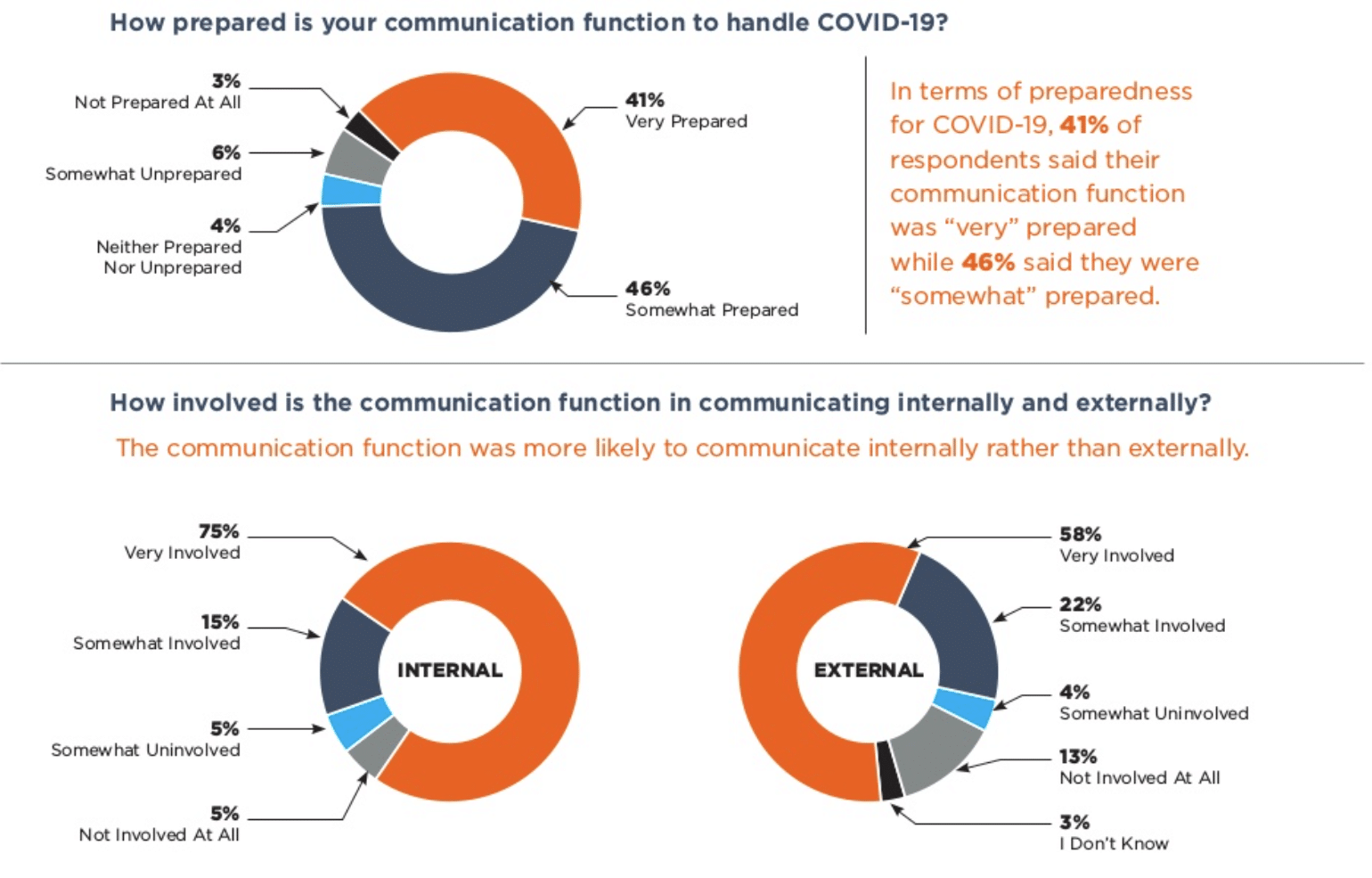
What communication leaders and companies are doing
While three-quarters (75 percent) of respondents said their communication function was “very involved” in communicating internally, this drops to 58 percent of respondents saying their communication function was “very involved” in communicating externally.
When communicating information about COVID-19, 81 percent of respondents said employees were a “high” or “essential” priority. Businesses are employing a variety of tools to communicate with their employees, including internal platforms, mobile apps, and hotlines. They have also made efforts to increase sanitation practices, including increasing sanitation stations, safety guidelines, and even some using thermal/temperature scanning to detect illness.
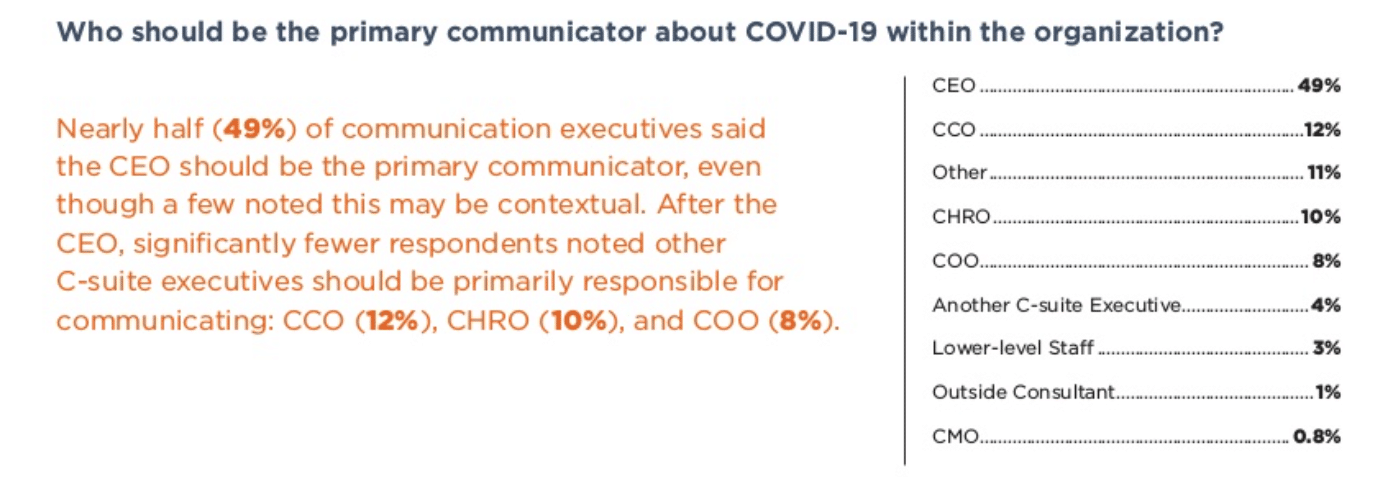
“All of our employees have access to Medtronic’s intranet and the banner right now is our COVID-19 hub,” said Clark. “It provides all the information needed on travel, health, and anything that will help. You can access this from your mobile as well. Nearly half of our company has made use of it making it the most trafficked digital resource we’ve ever had.”
Clark was not surprised that this has been such a valuable resource and feels it is intrinsic to his company’s mission.
“This has a personal impact on everyone,” said Clark. “People aren’t sure what to think and what it means for them personally or for their families. So, they’re looking for any guidance on what to do. We as the employer should be providing that.”
And the help doesn’t stop there. Companies are stepping up to do their part. More than half (53 percent) of the respondents said their companies are helping or plan to help those affected by the COVID-19 crisis.
Crisis preparedness
The majority of respondents (85 percent) felt their organizations are at least “somewhat” prepared for the COVID-19 crisis and 87 percent said the same about their communication functions. However, there was varied sentiment about how well companies are updating their crisis plans varies.
More than half (55 percent) said they have made good progress on updating their crisis plans or have them fully updated. Nearly one-quarter either had not made progress on updates, had not planned to update, or had no crisis plan at all. More specifically, while 56 percent had an infectious disease outbreak in their crisis plan, 44 percent did not.
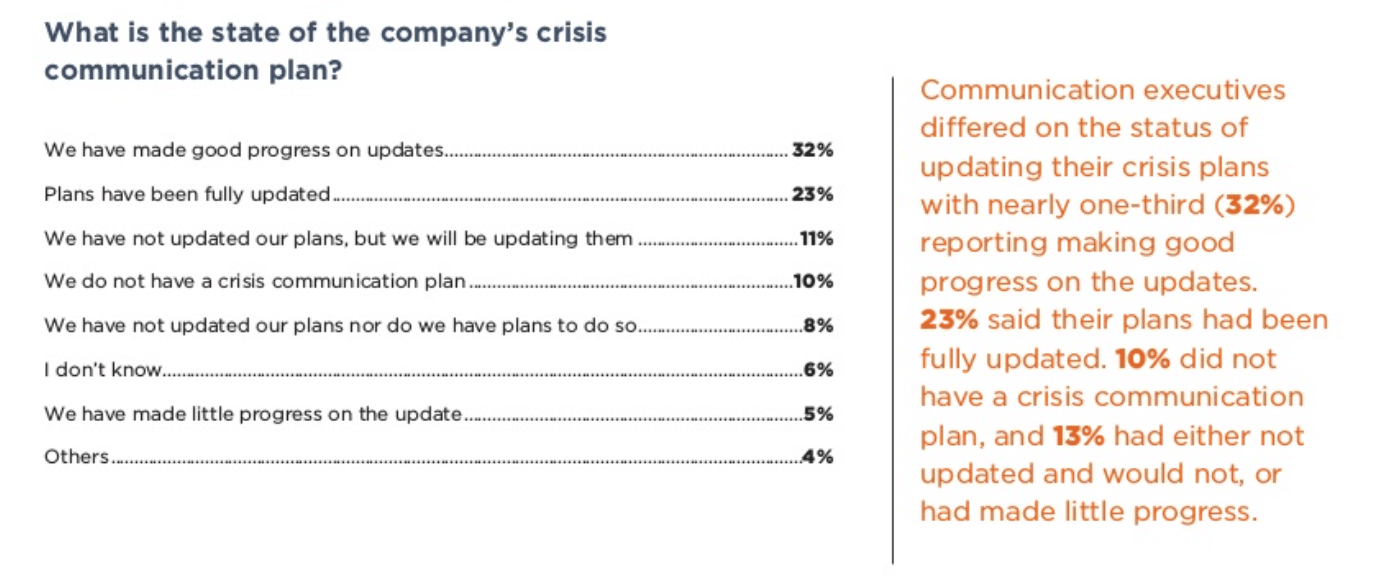
Trust in sources
Health-related agencies were reported to be the most trusted sources of information during the COVID- 19 crisis. Nearly three-quarters of respondents (71 percent) have “a lot” of trust in federal agencies, such as the Centers for Disease Control and Prevention or National Health Service, and international health organizations, such as the World Health Organization.
On the other hand, social media, online health websites (e.g., WebMD), and country leaders (e.g., presidents and prime ministers) were the least trusted sources of information. For example, 82 percent of respondents said they had “not much” or no trust in social media. Fifty-six percent reported having “not much” or no trust in country leaders. Only 5 percent of respondents directed stakeholders to seek additional information from country leaders, while only 2 percent suggested social media.
How much do you trust the following sources to provide accurate news and information about COVID-19?
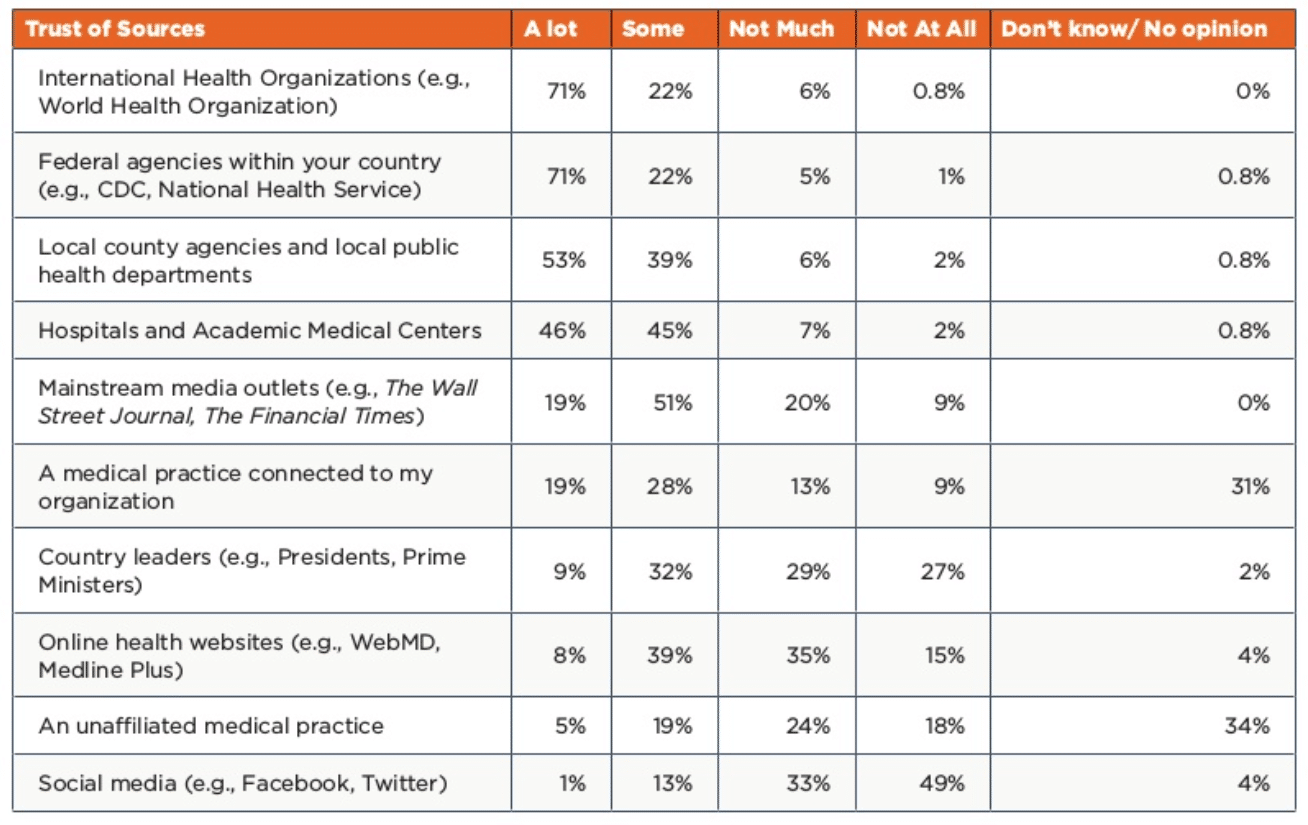
“Communicators significantly influence the decisions that organizations make as they serve as connectors among functions and stakeholders,” said Tina McCorkindale, Ph.D., APR, president and CEO of the Institute for Public Relations, in the release. “When they turn to trusted sources to help inform their stakeholders and curb disinformation, this has a significant impact not just on the business but society at large as well.”
The Institute for Public Relations conducted an online survey of 300 communication executives and senior leaders from March 5 -10, 2020 to find out how their company and their communication function are responding to the coronavirus. The margin of error based on the sample size is +/- 6%, but please note this was not a random sample. To give context to the survey, as of March 11, more than 120,000 people have been infected with COVID-19 around the world with more than 4,600 deaths. On March 11, the World Health Organization updated the classification of COVID-19 from an epidemic to a pandemic.







